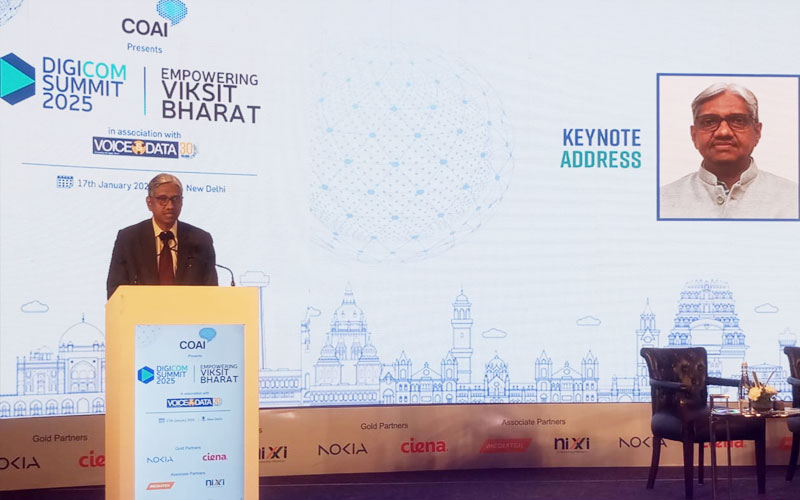India’s data transmission capacity is expected to grow four times with the activation of new submarine cables due in 2025, said TRAI Chairman Mr. Anil Kumar Lahoti at a telecom industry event.
Jan 17, 2025

India’s data transmission capacity is expected to grow four times with the activation of new submarine cables due in 2025 that connect the country to several key markets of the world, shares TRAI Chairman Mr. Anil Kumar Lahoti at a telecom industry event Digicom Summit.
TRAI Chairman said the contribution of the digital economy to the nation’s GDP has grown to about 12 per cent of the GDP which is estimated to reach 20 per cent by 2026-27.
Watch: Top Cable Companies in India
He further adds that since the current growth rate of the digital economy is 2.8 times the GDP growth rate. Accordingly, the government aims for a USD 1 trillion digital economy by 2027-28. The Indian telecom sector, which is the backbone of a digital economy, has witnessed significant development in recent years, setting the stage for a transformative era given unprecedented data consumption, a vast user base, and a policy-type friendly environment.
Mr. Lohita emphasized that as of the end of 2023, the total lit capacity and activity and activated capacity of these cables stood at 180 TBPS (terabit per second) and 132 TBPS, respectively. Multiple next-generation systems are due to become operational in 2025, replacing ageing cables. Once the new systems are fully operational, India’s data transmission capacity is projected to quadruple with additional crucial routes.
Also Read: NKT Celebrates Keel Laying for New Cable-Laying Vessel, NKT Eleonora
He further adds that one of the hallmarks for this increase in data transmission capacity is achieving over 100 times growth in rural broadband subscriptions in the last decade. In licence service areas such as Assam, Bihar, Himachal Pradesh, Odisha and Uttar Pradesh East, the aggregate count of rural broadband connections is significantly higher than the aggregate count of urban broadband connections.
He further acknowledged the effort of telecom operators in providing 4G coverage across 97 per cent of the villages and 5G connectivity in over 99 per cent of districts in the country.




